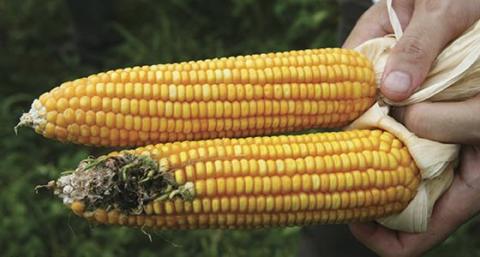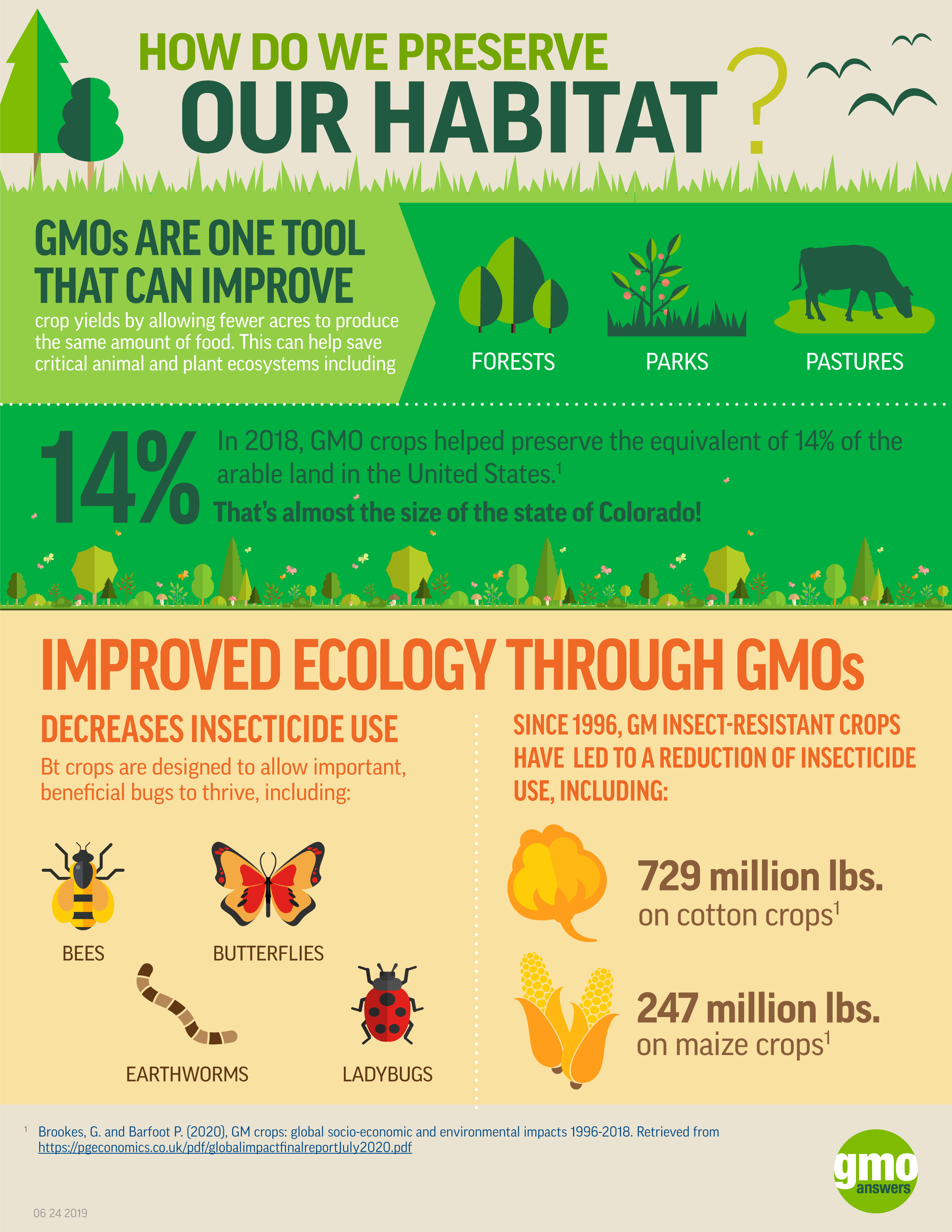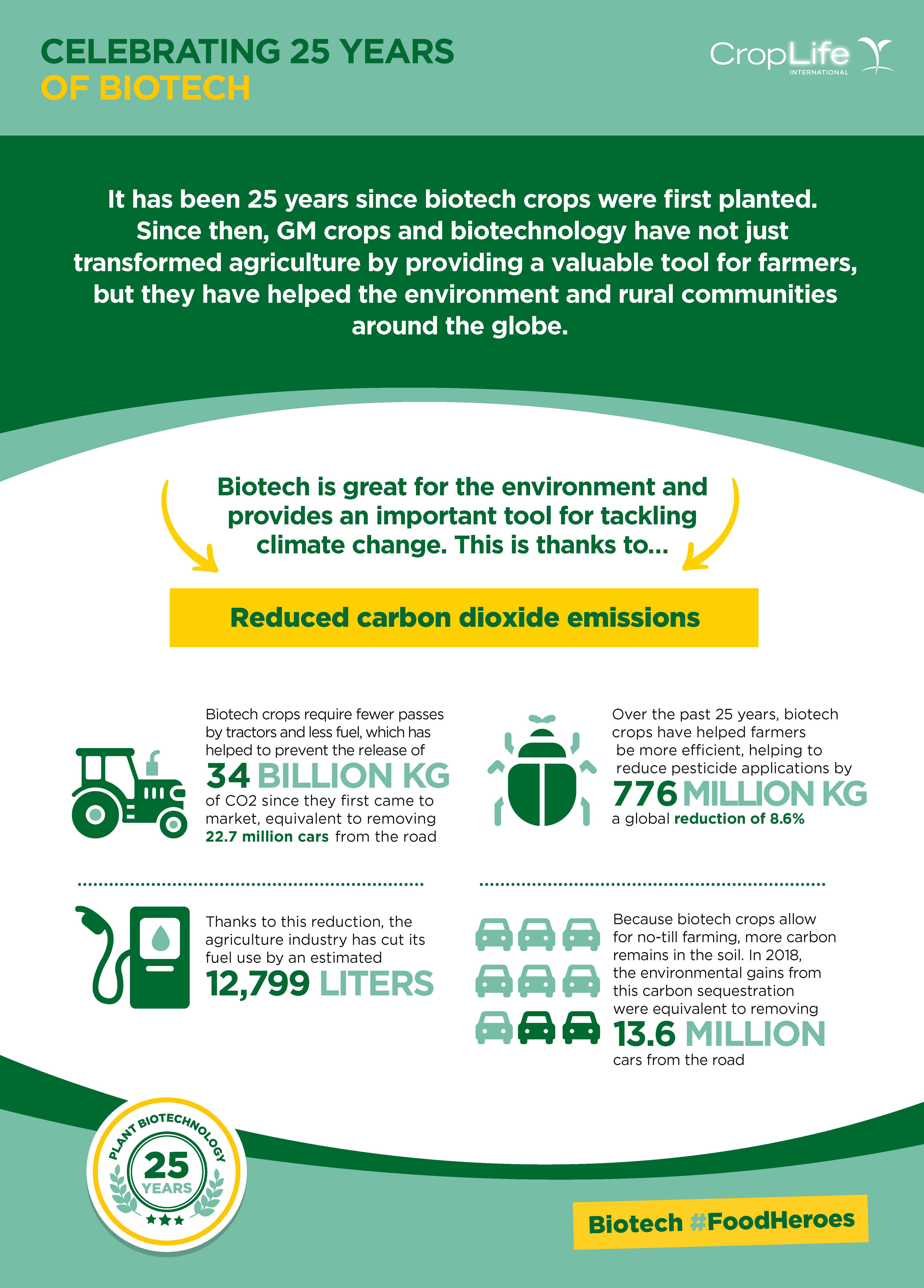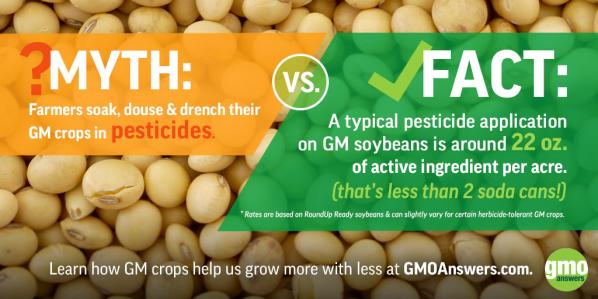Key Ways GMO Crops Help Fight Pests and Benefit the Environment
Farmers are an essential component of our modern food chain. Environmental sustainability and food insecurity are critical to all methods of agricultural production–conventional, organic and genetically modified. Farmers use pesticides to stop unwanted predatory insects and invasive weeds from destroying their crops. Just as gardeners deal with caterpillars that can wreak havoc on their fruits and vegetables, farmers manage for a variety of pests that interfere with crop production, reducing yield and increasing costs to the farmer and consumer.
Each GMO crop that exists was developed to address specific challenges farmers face in feeding and fueling a growing world, including better ways to fight pest that may otherwise destroy needed crops, creating compounding issues. Here are three important ways GMOs help to fight pests and reduce the use of pesticides on farmlands and fields.
GMOs Help Reduce Pesticide and Herbicide Applications
GMO crops have contributed to reducing the overall environmental impact of pesticides by 17.3%.1 This is achieved by creating crops that work with current pesticides and herbicides, which reduces the number of times farmers and agricultural operations have to use treatments to manage invasive weeds, bacteria, and insects. Herbicide-tolerant (HT) crops allow farmers to treat fields with pesticides, such as environmentally benign glyphosate, instead of tilling the land and destroying the soil, which leads to less herbicide treatments. Glyphosate is also a broad spectrum herbicide, allowing it to be used instead using different herbicides multiple times throughout the season.
 Insect-resistant (IR) crops produce a unique protein, Bacillus thuringiensis (Bt), commonly found in nature (and approved for use in all agriculture, even organic), that kills specific pests. Bt does this by interacting with specific cell receptor found in the guts of pests when they ingest the GMO crop. This receptor doesn’t exist in the guts of humans, animals, nor most insects.
Insect-resistant (IR) crops produce a unique protein, Bacillus thuringiensis (Bt), commonly found in nature (and approved for use in all agriculture, even organic), that kills specific pests. Bt does this by interacting with specific cell receptor found in the guts of pests when they ingest the GMO crop. This receptor doesn’t exist in the guts of humans, animals, nor most insects.
For example, a pest like the European Corn Borer may attack a corn field. When it does, these proteins only affect specific receptors in the gut of certain target pests like the borer, and are harmless to humans, mammals and most non-target insects. As a result, there are fewer insecticides needed to ward off target pests!
That’s why 82% of corn and 88% of cotton grown in the U.S. is genetically modified for insect resistance.2 You may have heard that GMOs have led to farmers using more pesticides. The fact is, GMOs have led to a reduction in overall pesticide use. Here’s how.
Indiana farmer Brian Scott explains that by using Bt crops:
“We won't have to come in during the growing season to make a blanket pesticide treatment across the entire field. This means a sprayer is kept out of the field -- meaning it didn't need fuel to power the sprayer or water to carry the chemical. Fewer passes across a field also mean less soil compaction in the wheel tracks. And don't forget I didn't buy any chemical or pay an application fee to a custom sprayer. Because Bt targets specific pests, we are not spraying insecticide on the beneficial insects in our fields.”
GMO crops increase crop harvests and decrease agricultural land use
GMO seeds are one of the many tools that farmers use to grow the crops needed to feed both local communities and people the world over, while leaving land for populations to actually use and live on. With GMO crops being used to directly combat critical environmental challenges like pests, weather, and disease along with societal concerns such as food waste, farmers are able to achieve better harvests using less land. In 2020 alone, growing the same amount of crops globally without the use of GMO seeds would have required 23.4 million more hectares/57.8 million more acres of land.3 For context, that’s larger than the state of Idaho!
GMO crops foster sustainable farming practices
Conservation tillage (no-till, minimal-till or reduced-till farming) is not unique to GMO agriculture. It is an important component of an integrated pest management (IPM) program that is used by many farmers to help increase soil health and cut down on carbon dioxide (CO2) emissions. Instead of tilling an entire field after harvest, farmers can leave what's left of the crops (like corn stalks) in the field, and then plant seeds directly into that residue during the next planting season (like soybeans).
Humans have been modifying crops for more than ten thousand years using conventional methods (such as crossbreeding) which involve large-scale and imprecise changes. With biotech solutions like genetic modification, researchers can make small, precise and extremely well-known changes to crops for the benefit of humans and the environment.
From More Information, See These Resources
References
1,3) https://pgeconomics.co.uk/pdf/Globalimpactbiotechcropsfinalreportoctober2022.pdf
2) https://www.ers.usda.gov/data-products/adoption-of-genetically-engineered-crops-in-the-us/recent-trends-in-ge-adoption.aspx


